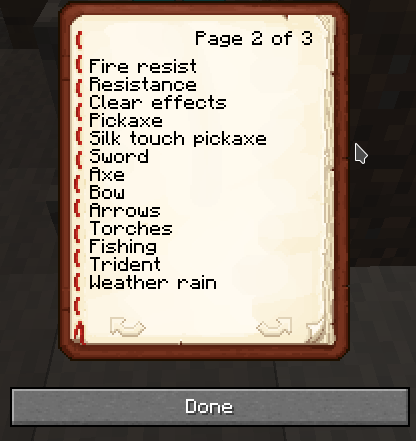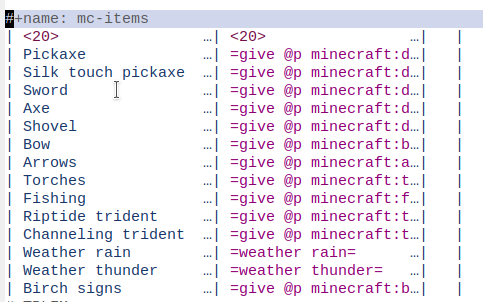Embracing the shallows
| parenting, productivity: Added more notes from my experiment with semi-retirement.
I'm sitting in the same room as A+ as she attends virtual grade 3. She uses the computer speakers instead of her headphones. I feel there's a part of my mind that I can't access with stuff going on in the background, but I don't mind so much. Listening in is a good way for me to keep up with what she's learning in class. (Sometimes there are moments of unexpected hilarity.) I used to go off to a different room, but A+ likes to have me around. Might be like the body doubling that many people find helpful. In a little less than an hour, we'll have recess, so that's another constraint on how deeply I can get into a task or an idea.
Right now I feel like writing about a thought that I've been picking up and putting down over the past few days/years: embracing the shallowness of my attention at the moment.
The shallows aren't bad; they're just part of life
Most of the books I've read about productivity or writing treat distraction as a bad thing. Juxtaposing The Shallows: What the Internet Is Doing to Our Brains (Nicholas Carr), Deep Work: Rules for Focused Success in a Distracted World (Cal Newport), and Four Thousand Weeks: Time Management for Mortals (Oliver Burkeman), I find myself leaning more towards Burkeman's acceptance of limits and lack of control. I'd rather figure out how to embrace these shallows than to write off large portions of my life: parenting a young child with all the attendant interruptions (which I am learning to welcome) and preparing for eventual old age. I'd rather be here so that the kiddo can send me notes by post owl (paper airplane) than go behind a door that I can shut. I love that she wants to show me book passages that she found funny and that she wants to ask me what-if questions about Harry Potter and that she wants to snuggle.
The people I hear from reassure me that this splitting my attention because of parenting is okay; it's because I'm choosing something that's higher priority for me at the moment; it's temporary; it's worthwhile. As the kiddo often reminds me (because I often say it out loud to her, with love and affirmation): I signed up for this, I only get so many years of this.
If we're lucky, we get old. Some don't. Some people stay sharp, like the way Leslie Lamport's still writing in his 80s. (Writings) My mom struggles with energy and forgetfulness and physical decline, so that might be closer to my experience; I can be pleasantly surprised otherwise.
Things I've been learning about the shallows over time
- Toot about embracing the shallows and some follow-ups and replies
- What did I learn from this experiment with semi-retirement? (2017)
- I got to enjoy tons of autonomy for a few years. Even then, I didn't do the things I feel a little wistful about, so I don't need to feel like time or attention is holding me back from working on those.
- I realized that it wasn't just about getting things done. There are many ways to live a meaningful life. Even a small life is fine.
- Accumulating gradual progress is good.
- Braindump from radiostudent.si interview with Lio Novelli and Jurij Podgorsek: Emacs, focused time (2023)
- Embracing the shallows might help more people get into and stay in the things they're interested in.
- The things I do to adapt to temporary shallows can help me in other situations too.
- Dealing with thought fragmentation, reducing mental waste (2018)
- "It was useful for me to let go of wanting to focus." - hah, still learning this lesson
- It can be useful to think of both trimming waste as well as building on strengths.
- Working with fragmented thoughts (2015)
- Index cards can be a useful size for a thought.
- High energy and low energy activities (2013)
- There are plenty of things I can do when I don't feel like thinking much.
- Dealing with distractions (2013)
- Sometimes my mind has a hard time with unfinished things. I can go with it. I can work around it. I can also structure things to be much smaller so that I don't have as many unfinished things, or write it down and trust that I'll eventually get back to it when the time is right.
Things I can do in the shallows
So, accepting that this is what I've got, what do I want to do with it?
I can take it all in. It's okay to just be.
When I want to do things, there are plenty of things I can do from here.
One of the things I've learned while doing Emacs News is that even things I can do in the shallows can be useful. Organizing information and passing it along does not require deep reflection or a quiet mind.
I can read in short bursts here and there, take notes, and share them. How to Take Smart Notes (Sönke Ahrens; my notes) reassures me that I can take short notes as I read, and those notes can build up into something useful.
Most of my Emacs tweaks are short. They also accumulate. More things become easier and easier.
I've been tweaking my drawing workflow to be comfortable with parts of pages instead of feeling like I need to fill in the whole thing. I used to draw on a Nintendo DS, index cards, and a Samsung Note 8. A small canvas makes it easier to feel like a thought is complete, but I can do the same even with the A5 size of my Supernote. I just have to give myself permission to stop.
Now I am learning to write small thoughts. They aren't amazing insights, but they're enough for me, and sometimes they resonate with other people.
Tweaking my idea flow
I wonder about the different kinds of shallows I find myself in:
- I can be on my computer; there's stuff going on in the background; I might be interrupted, and I'll need to wind up soon anyway
- Writing: could get better at:
- Collecting links and resources
- Listing thoughts for further development, collecting snippets
- Coding: could get better at:
- Keeping it small
- Adding tests
- Sharing notes
- Checking for previous implementations or related stuff
- Correspondence: could get better at:
- Keeping track of things
- Writing: could get better at:
- I can draw.
- Untangle my thoughts: pretty easy to think of a question to ask myself; try using my tosketch tag
- Read a book and take a few more notes
- Maybe share more granular notes?
- I can read or write on my phone while I'm waiting for someone.
- Tends to be dominated by current questions; could get better at reviewing things that I've added to my to-read list.
- I can talk out loud because I'm doing a chore or errand by myself and no one else is around. Audio braindump workflow - could get better at:
- Quickly reviewing a list of questions (:todump: tag)
- Getting ideas of out of the transcripts
- I can listen to something while I do chores or errands. Could get better at:
- Skipping podcast episodes I'm not that interested in
- Finding podcasts I like
- Making and storing notes
- I can't be on my phone, but I can think about things.
- Nice to have a background question I can return to in those moments, and then I can capture a note or post a toot that I can flesh out eventually.
Related: My toot on 2024-10-30T00:24:48.668Z about the shallows



